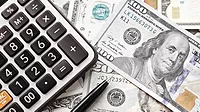How Tax Reform Could Mean a "BOOM" to Commercial Roofing
New tax laws will make it less expensive to operate your business this year compared to last.

There have been a lot of articles written about the recent tax-reform bill, called the Tax Cuts and Jobs Act, since it became law on Jan. 1. There are many provisions within the law that will change the way both individuals and business owners will plan for future tax filings and how they run their businesses. This article will review some of the bill’s provisions as they relate to business owners in the roofing industry, and provide some guidance on changes that may be appropriate for the exiting owner.
First and foremost, it will be less expensive to operate your business in 2018 than it was in 2017. Aside from the various provisions, one key element is that tax rates have dropped these ways:
- C Corporations will enjoy the greatest benefit as rates dropped from 34 percent to 21 percent;
- Individual rates will still have 7 brackets, but each bracket has been reduced by 2 to 4 percentage points;
- The income brackets have been slightly increased, so it will take more taxable income for an individual to move into the next highest bracket;
- Pass-through entities (sole proprietors, partnerships, S Corporation and trusts and estates) will still be taxed at the individual income tax rates. However, there are provisions that can effectively eliminate 20 percent of the income from being taxed;
- The 199A deduction, which I’ll describe in greater detail later in the article.
Some key provisions that will influence the marketing side of businesses in general is the elimination of the meals and entertainment deduction. The previous law allowed for a 50 percent deduction for any meals and entertainment expenses incurred in the normal course of a business’ sales cycle. This deduction has now been lost. Meals paid for the benefit of employees that are necessary for them to work beyond normal hours continue to be 100 percent deductible.
A provision that does provide a benefit to a business owner’s tax situation is the increase of the Section 179 deduction. This deduction allows a business owner to fully expense the cost of a capital asset in the year it was placed in service. The previous deduction provided for a $500,000 limit on expensing. The new limit was raised to $1 million and the phase out was also increased from $2 million to $2.5 million.
The definition of “eligible property” was also expanded. Here’s where the new provision can really help commercial roofing companies increase revenue. The provision expands the definition of qualified real property eligible for Section 179 expensing to include improvements to non-residential real property placed in service after the date such property was first placed in service. This expanded definition includes roofs, heating, ventilation, air conditioning property, fire protection, alarm systems and security systems.
This means that commercial roofing company customers can now fully expense the cost of a roof up to $1 million provided they do not acquire other tangible personal property that exceeds the $2.5 million cap.
Previous law required the cost of construction for a new roof to be capitalized and depreciated over 39 years. In light of the industry’s efforts to get congress to reduce a roof’s depreciable life to one that more closely resembles a roof’s true economic value, this is a step in the right direction. Previous efforts included bills introduced in the 110th, 111th and 112th congressional sessions but no action was taken.
In addition to the Section 179 deduction, the bonus depreciation rules were also expanded. This is one of the few changes that affect 2017 tax computations. The provisions allow for property acquired after Sept. 27, 2017 and placed in service prior to Dec. 31, 2022 to expense 100 percent of the cost. Where this provision previously only allowed for expensing of new equipment, the new law expands the definition to include used equipment. The act clearly rewards business owners making capital investments.
Passing Through
The other key provision in the act affects the pass-through entities. As mentioned earlier, pass-through entities were also granted a further reduction to compete with the C corporation tax break.
There’s a specific provision in the act called the Section 199A deduction. This is the area of the law that provides for a 20 percent deduction for owners of pass-through entities. Now, a straight 20 percent exclusion of income sounds great and would certainly follow this administration’s goal of tax simplification, but nothing of the sort is accomplished with this law.
The general 20 percent deduction is applicable for single taxpayers with taxable income under $157,500, and joint filers with taxable income under $315,000 will generally get the full 20 percent deduction. However, as income levels increase above these limits, the formula deduction looks at W-2 Wages paid to employees and also at the depreciable property held by the pass-through entity.
For these high-income taxpayers, in some cases, the deduction gets limited to 50 percent of the W-2 wages paid by the entity or 25 percent of the wages paid by the entity plus 2.5 percent of the qualified property’s original cost. For the property to qualify it can’t be greater than 10 years old or past its last full year of depreciation. Income levels between the upper and lower limits get a phase-in of the W-2 and property requirements. So much for simplification!
For those that conduct business in the personal service industry such as accountants, attorneys and consultants, they’ll lose the deduction altogether once their income exceeds the upper limits as described earlier. There’s an exception to this rule, however. Engineers and architects don’t fall under the exclusion and would follow the ordinary business definition for application of the 199A deduction.
The fundamental question that’s asked is why not convert the pass-through entity to a C corporation? On the surface one would think that’s a wise decision. Yet, it’s important to note that anytime income is taken out of a C corporation, there’s generally a second layer of tax. I say generally because for an “exiting owner” there could be some good opportunities to utilize a C corporation as an exiting tool and eliminate capital gains on the transaction while benefiting from a lower annual income tax rate.
Other key provisions to be aware of:
- The Lifetime Gift and Estate Tax exclusion doubled to $11.2 million per individual. Married couples with estates below $22.4 million will be free of federal estate and gift taxes;
- The annual gift tax exclusion increased to $15,000 per donor, per gift;
- Personal exemptions have been eliminated and are now covered under the increased $24,000 standard deduction;
- Miscellaneous itemized deductions have been eliminated. Investment fees are no longer deductible;
- Medical expenses are now deductible in excess of 7.5 percent of adjusted gross income;
- Alimony payments for agreements entered into after Dec. 31, 2018 are no longer deductible by the payer or includible as income by the recipient;
- Interest home equity lines of credit are no longer deductible;
- Mortgage interest on loans in excess of $750,000 are no longer deductible;
- Net operating losses generated from business, trust and estates that exceed current year income in excess of $250,000 for singles and $500,000 for joint filers can’t be fully deducted in the current year. It must be carried forward and subject to 90 percent of subsequent year’s income;
- The Alternative minimum tax has been repealed for C corporations. The individual AMT still exists, however, the exemption amount increased;
- When itemizing deductions, the tax deduction is capped at $10,000 annually. There is no cap on tax deductions for businesses;
- 1031 gain deferral now only applies to real estate transactions.
As you can see, there have been many new changes to the tax laws. There may be a need to make changes in your financial and legal strategies such as operating agreements, income allocation, wage and income distributions and estate tax documents.
It’s important to understand that similar to previous tax bills, there are sunset provisions to consider. With the exception of the C corporation tax rates, many of the provisions of this law will expire, on Dec. 31, 2025.
Editor’s Note: U.S. Treasury Circular 230 requires that any tax advice provided in this column is not intended or written to be used, and cannot be used by you, for the purpose of avoiding penalties that the IRS could impose.
Looking for a reprint of this article?
From high-res PDFs to custom plaques, order your copy today!






